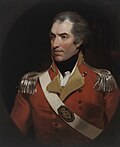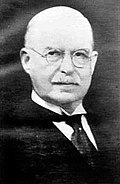This article needs additional citations for verification .(September 2014) |
| Governor of Tasmania | |
|---|---|
 | |
 Flag of the Governor | |
| Viceregal | |
| Style | Her Excellency The Honourable |
| Residence | Government House, Hobart |
| Appointer | Monarch on the advice of the premier |
| Term length | At His Majesty's pleasure (typically 5 years) |
| Formation | 8 January 1855 |
| First holder | Sir Henry Fox Young |
| Website | govhouse |
| This article is part of a series on the |
| Politics of Tasmania |
|---|
 |
| Constitution |
The governor of Tasmania is the representative in the Australian state of Tasmania of the monarch, currently King Charles III. The incumbent governor is Barbara Baker, who was appointed in June 2021. The official residence of the governor is Government House located at the Queens Domain in Hobart. The governor's primary task is to perform the sovereign's constitutional duties on their behalf. [1]
Contents
- Role
- Titles
- Governor's personal flag
- Divided in two
- Lieutenant-governors and commandants in the south
- Commandants in the north
- List of governors of Tasmania
- Lieutenant-governors
- Governor-in-chief
- Governors
- References
- Sources
The position has its origins in the positions of commandant and lieutenant-governor in the colonial administration of Van Diemen's Land. The territory was separated from the Colony of New South Wales in 1825 and the title "governor" was used from 1855, the same year in which it adopted its current name. In accordance with the conventions of the Westminster system of parliamentary government, the governor now almost always acts on the advice of the head of the elected government, the premier of Tasmania.
Tasmania retained British-born governors longer than most other states. The first Australian-born governor was Sir Stanley Burbury (appointed 1973) and the first Tasmanian-born governor was Sir Guy Green (appointed 1995). Since Burbury, all Tasmanian governors have been Australian-born, except for Peter Underwood who was born in Britain but immigrated to Australia when a teenager.


































